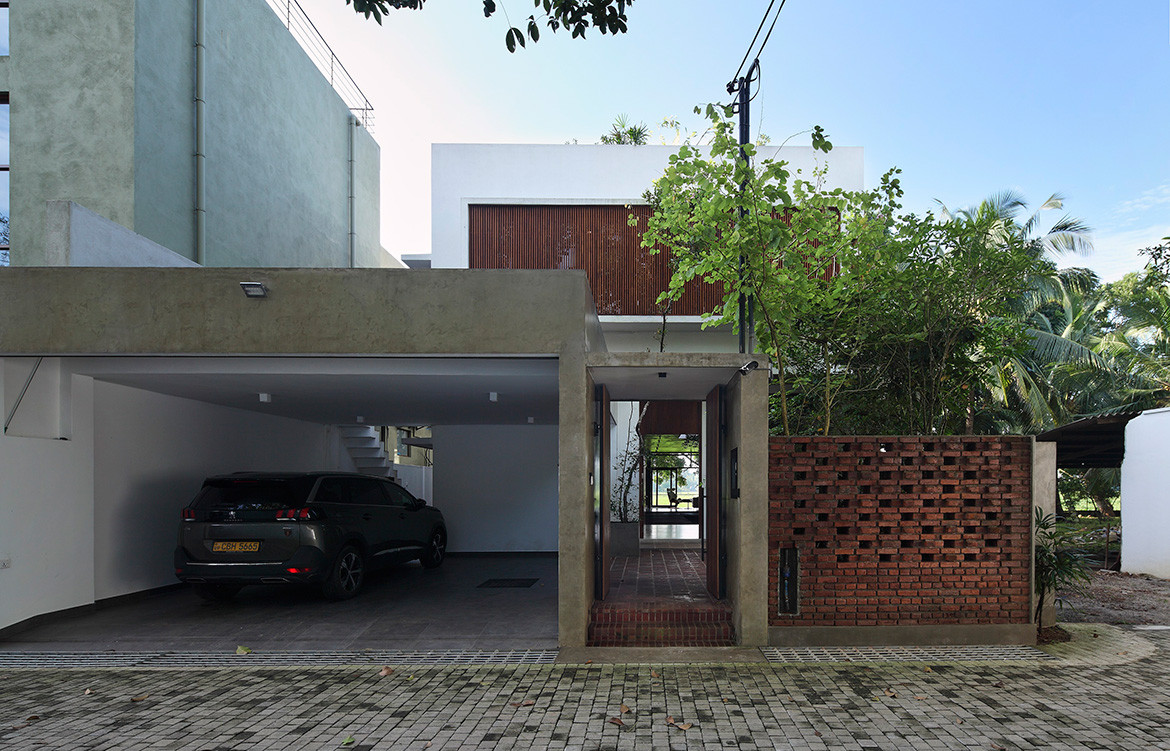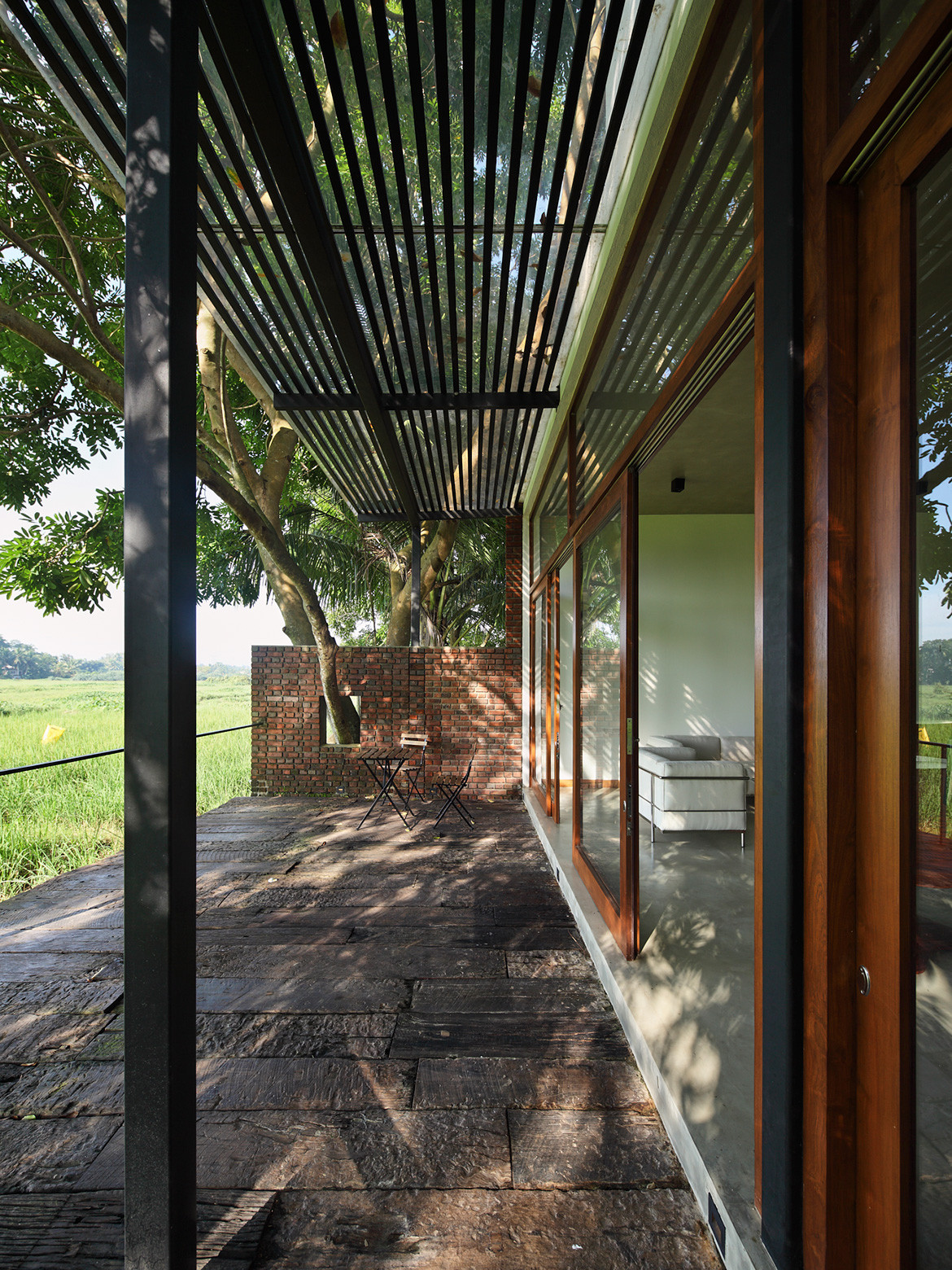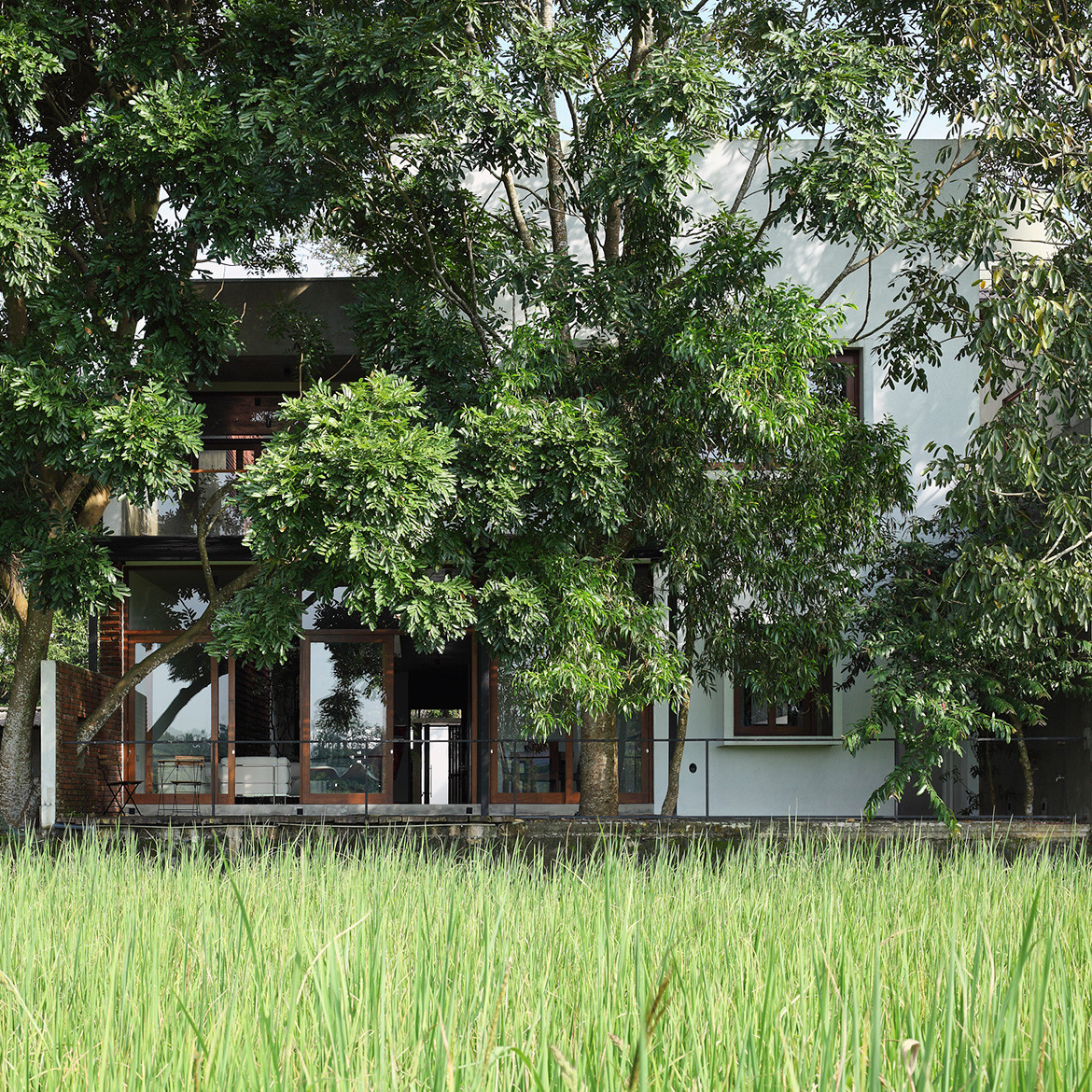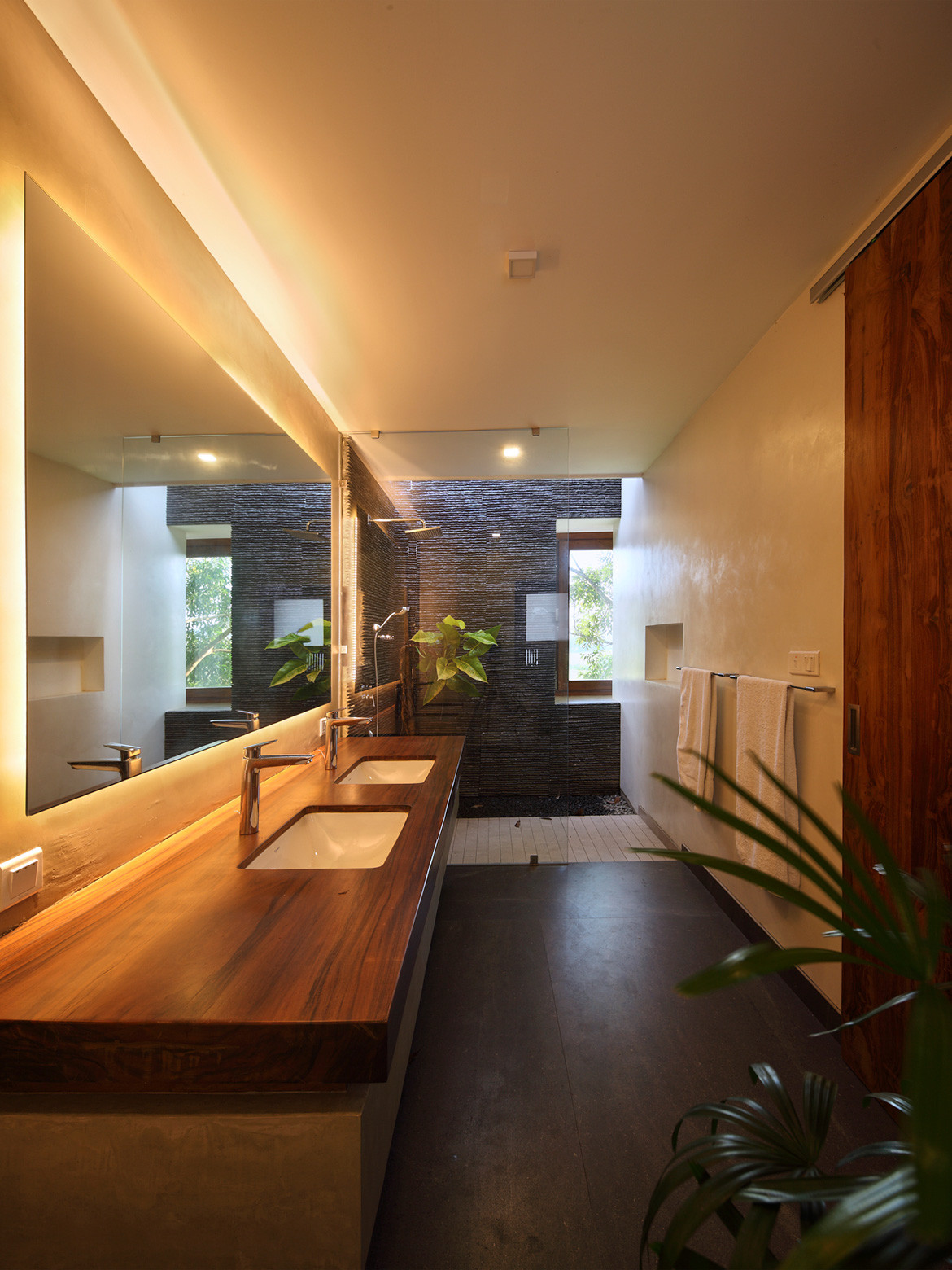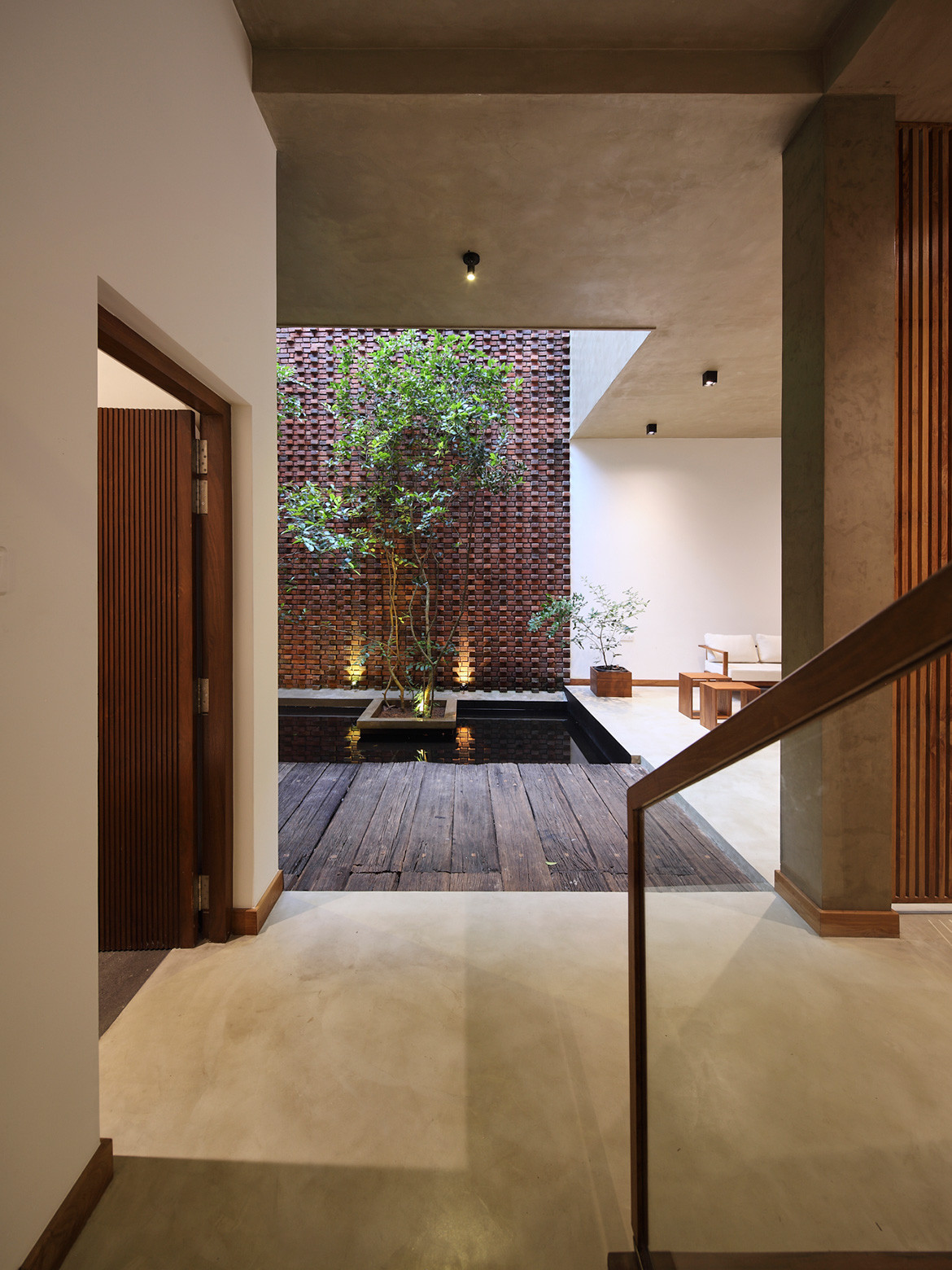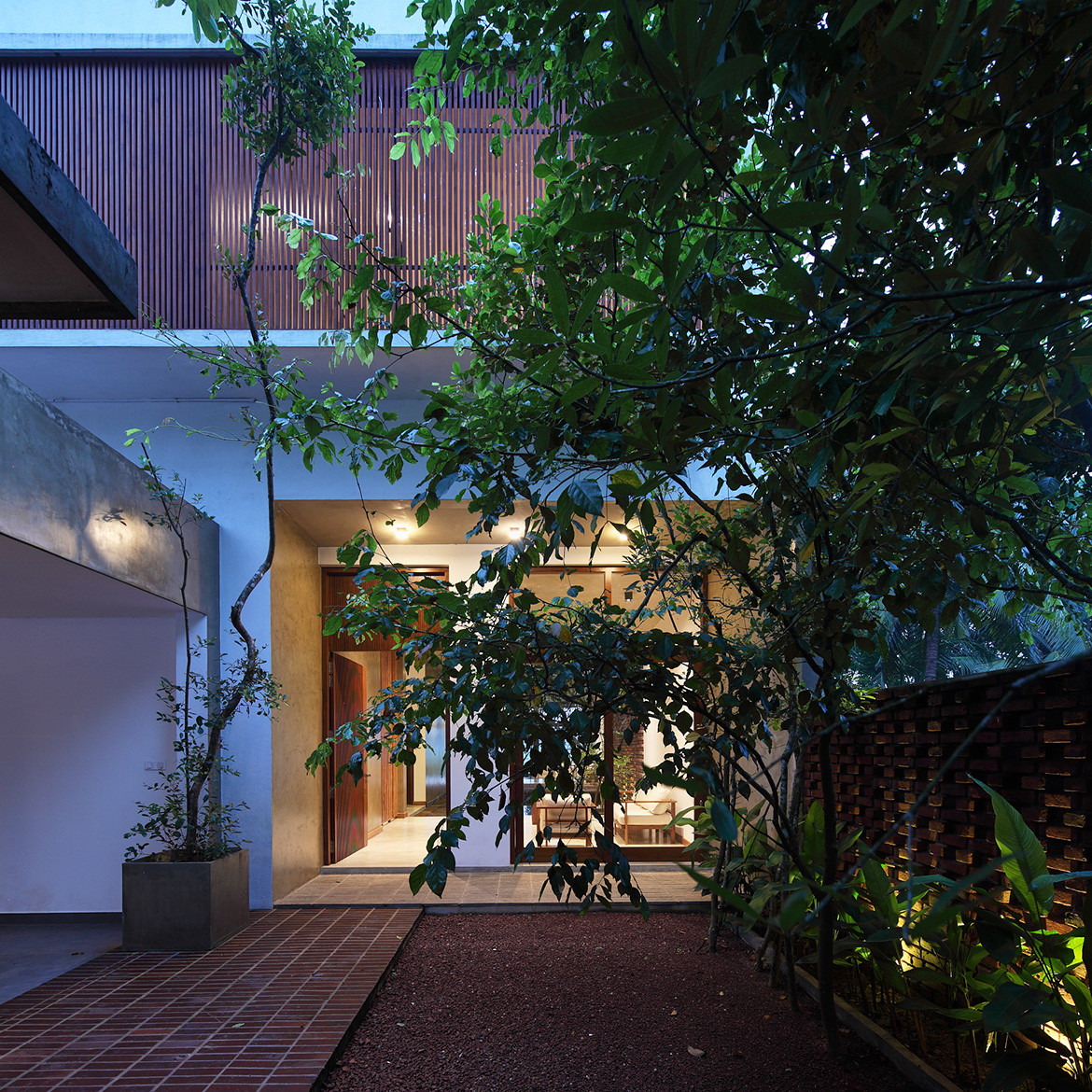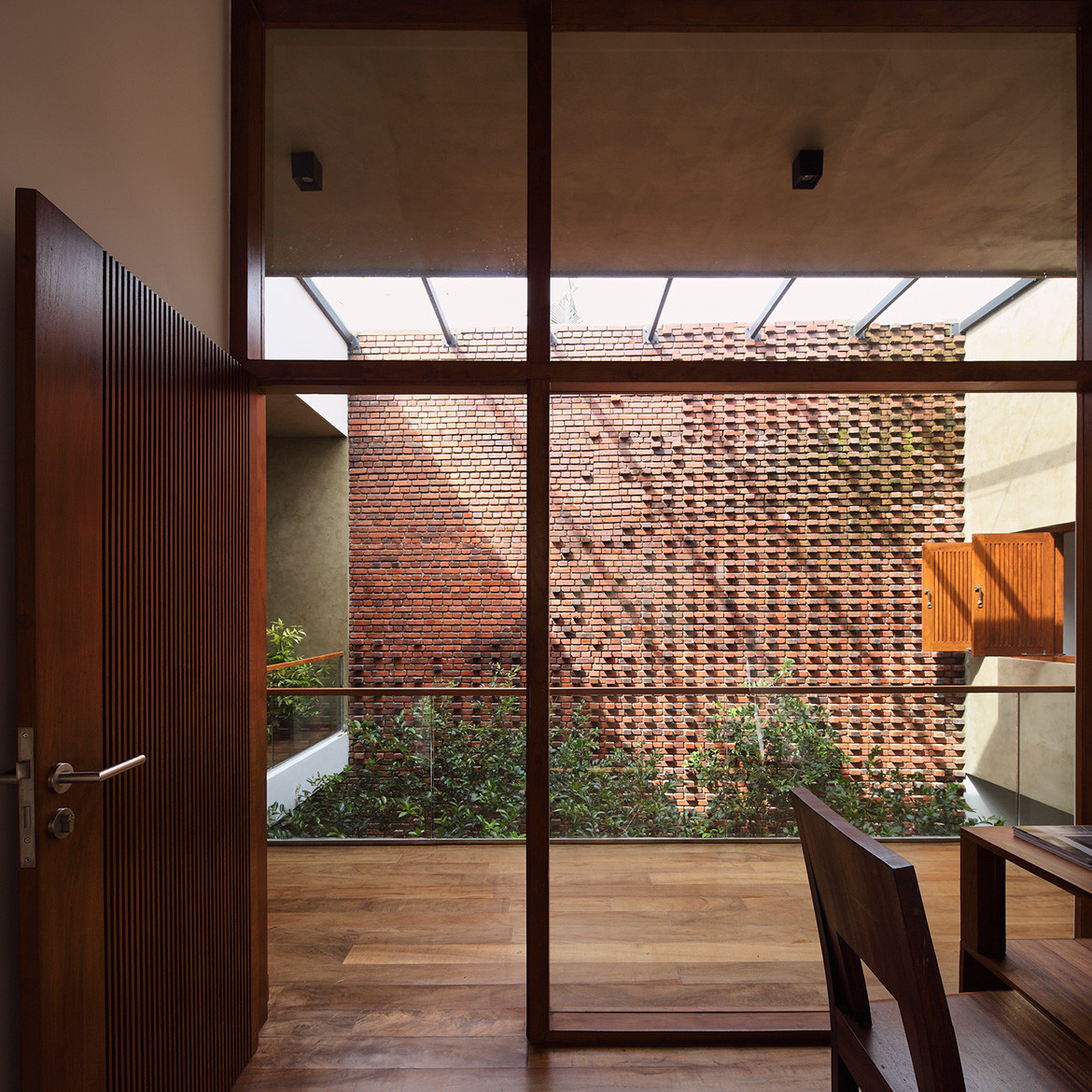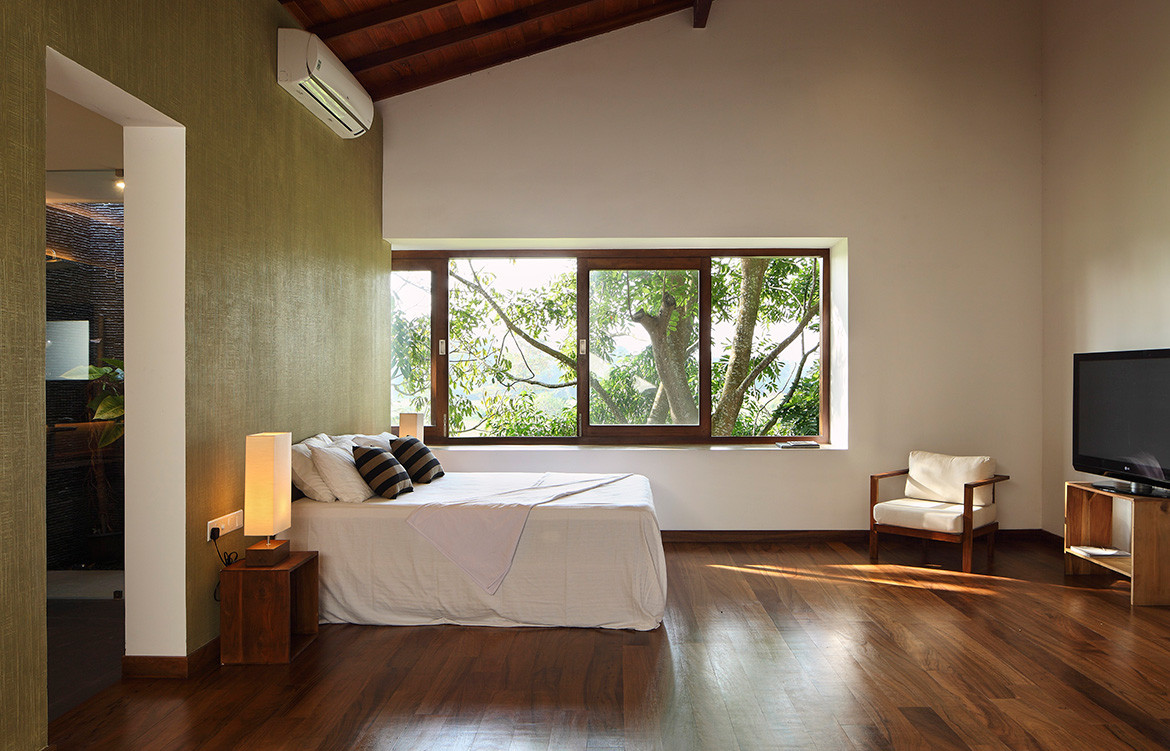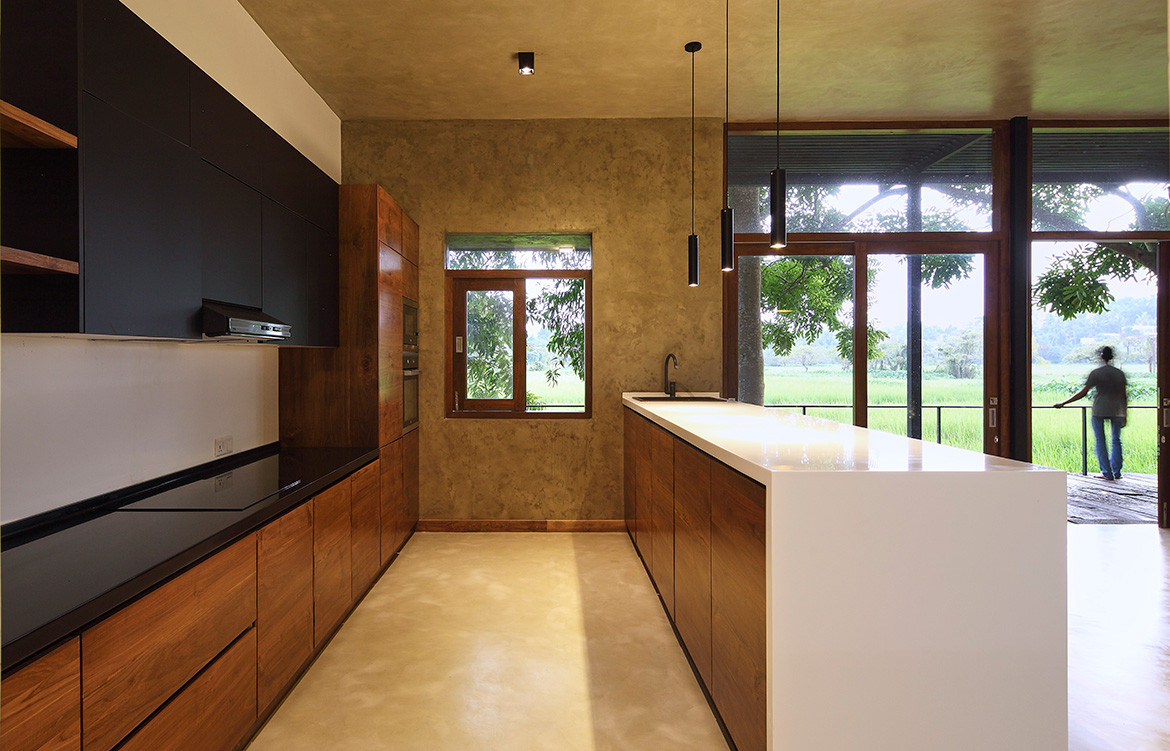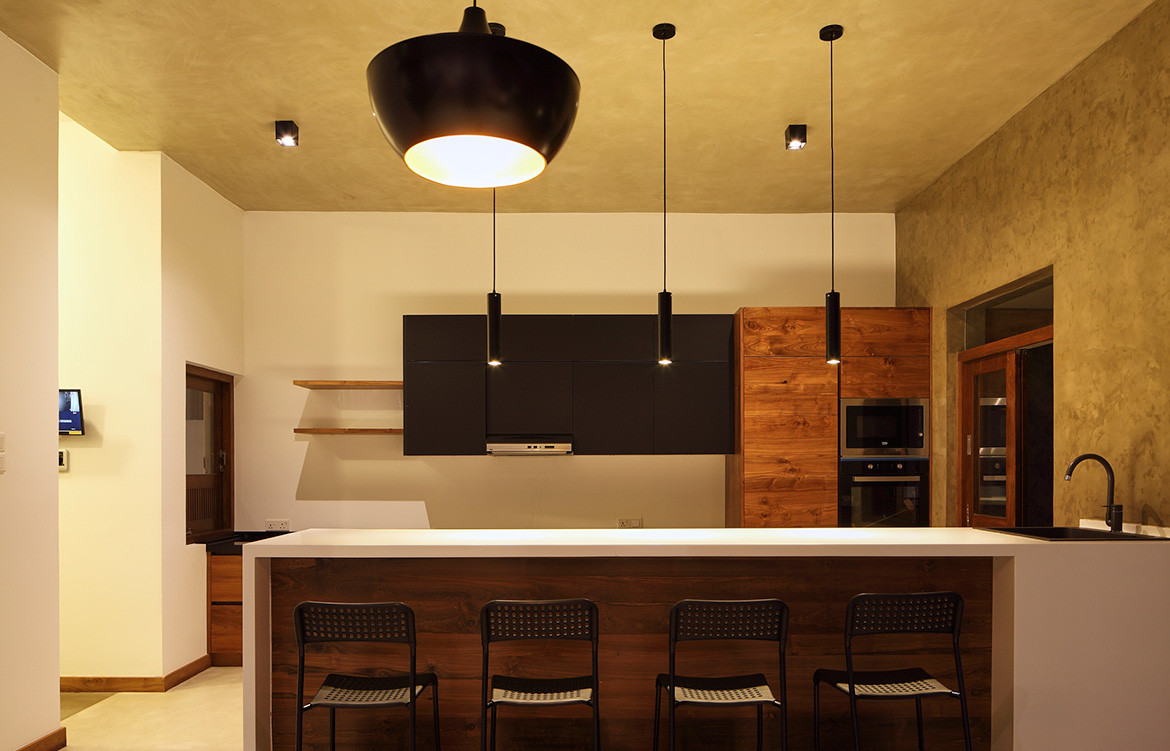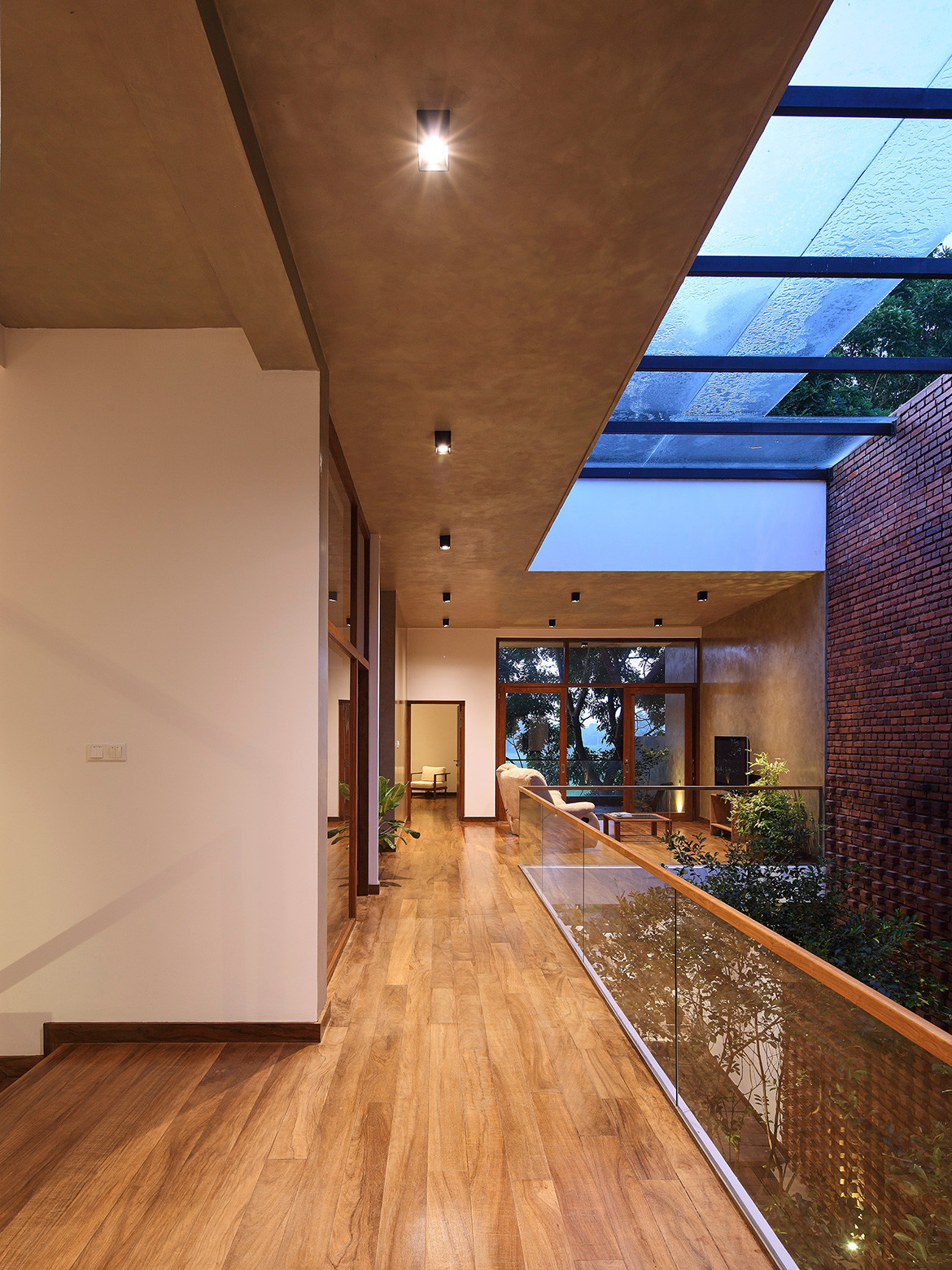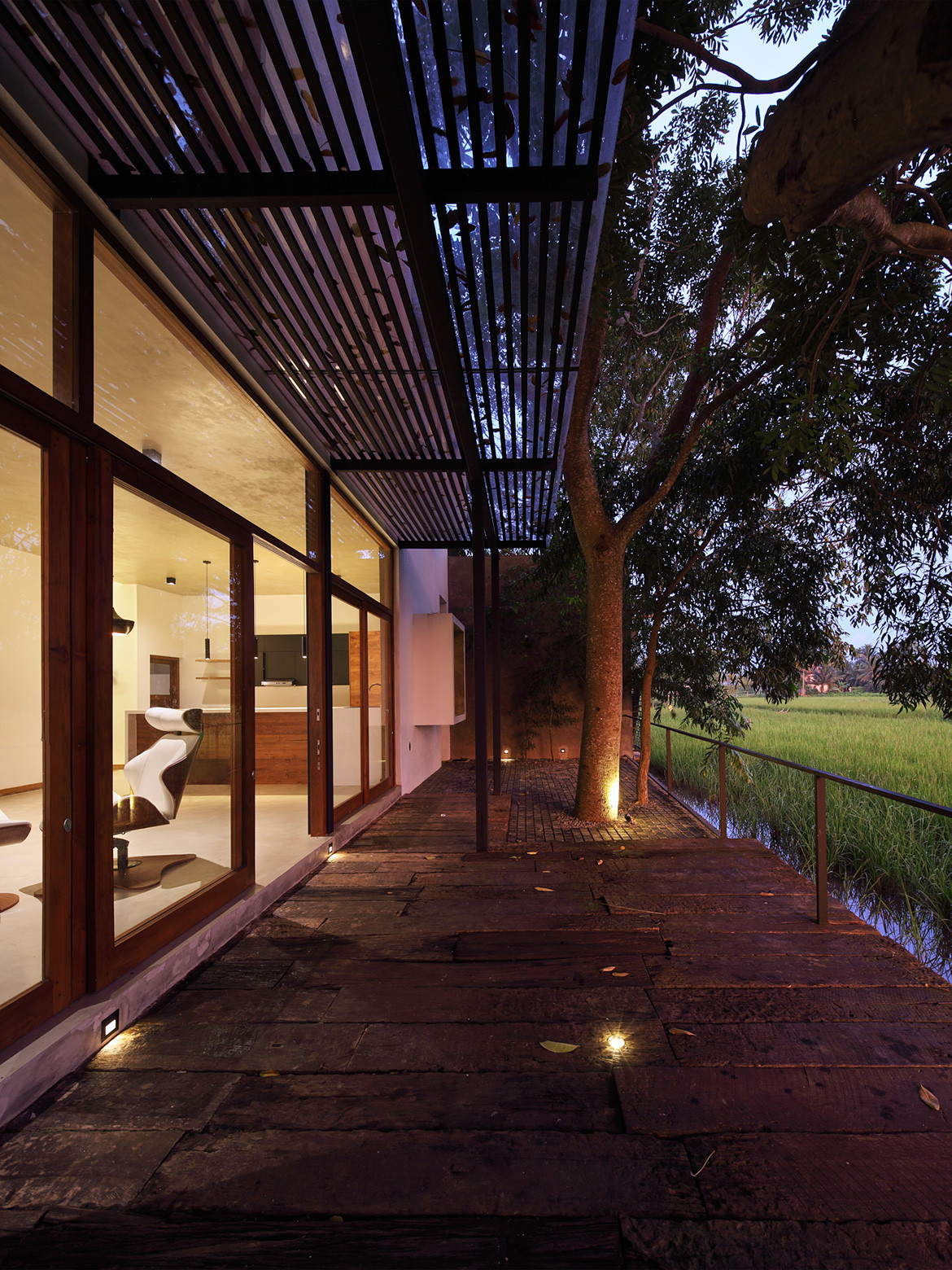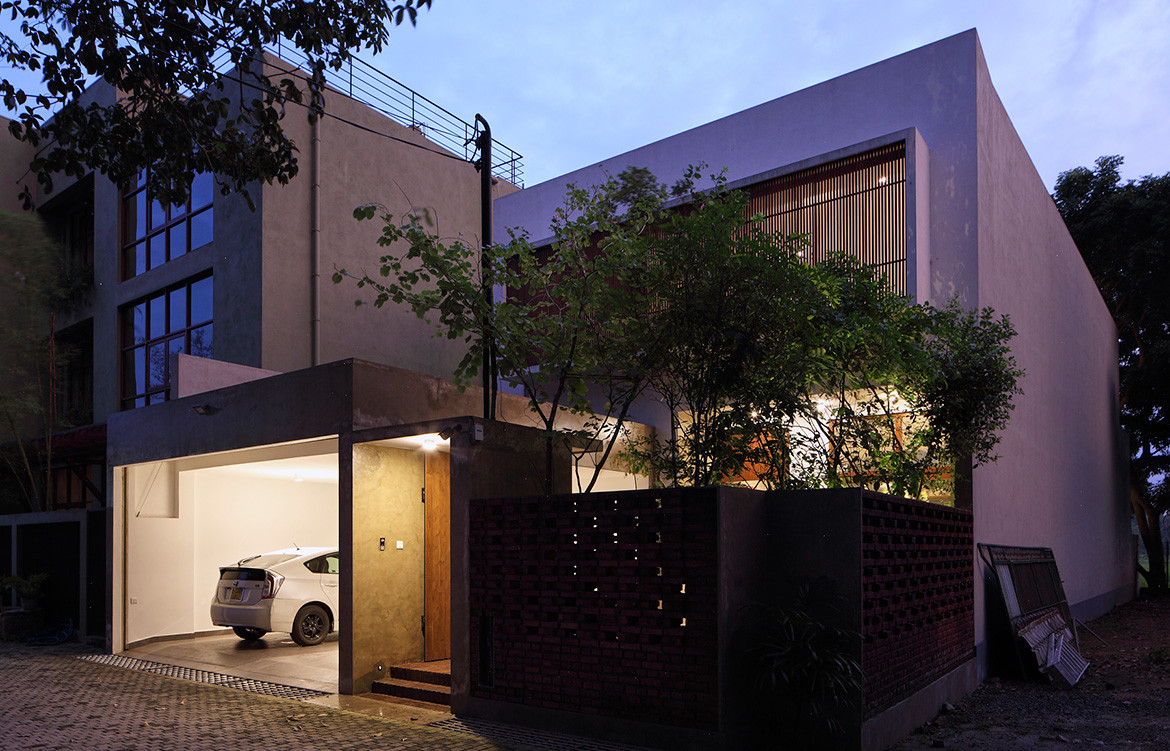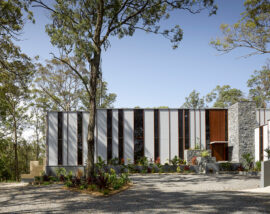A little over 15 kilometres from downtown Colombo, this house offers a transition from the bustle of the city to rural calm. It is a classic example of the tropical modern house where the clean functionality of modernism is fully at home within a tropical climate: celebrating it without sacrificing comfort and sanctuary.
Typical of the tropical modernist house, the House at Kalalgoda turns its back on the urban street and only reveals itself through an articulated entry progression. A fairly narrow plot with a site area of just 364-metres-squared, the house presents at street level as a concrete frame (the garage and white rendered volume of the house) and a porous brick wall to one side of two handsome timber doors. Beyond these doors is a small entry court shaded by lush Dan trees (Lilly Pilly) and paved with earth-coloured tiles forming an edge to the red gravel garden. The upper level of the house partially conceals itself behind a timber screen made up of vertical slats to allow breezes into the bedroom behind.

But once inside there is a sequence of framed views leading through the dappled light of a double-height void culminating in the glazed living/dining area. This in turn leads out on to a stone terrace where the transition from urban noise to rural serenity concludes with sweeping views of a cool, green paddy field.
Apart from the visual connection to nature – through views and the diurnal play of light down into the void – the house can largely self-regulate. Natural ventilation is generated by the spatial flow of the open plan, porous timber screens on the windows and the double-height void, partly open to the sky, with its twin Dan trees set in the middle of a shallow pond.
The cooling potential of the natural ventilation is enhanced by the house being open to cooling breezes off the paddy field.

The pond is backed by a blind brick wall, a defining boadwalk down the edge of the pond and wrapping around one end. This is made from recycled timber railway sleepers, while loose timber furnishings, vertical timber screens and timber planters combine with the brick wall to form a warm and natural palette.
Appropriately, the lower level of the house is dedicated to the public spaces, while the upper level is a kind of piano nobile intersected by the void. The upper level bedrooms and study look out on to the brick wall of the void, the rising Dan trees and glimpses of the sky.
With its use of textured natural materials, indoor greenery, framed views of the outside opening up to a grand vista and its family of intimate yet connected spaces, this house generates a sense of living in nature – and connection to nature – while still providing elegant and comfortable amenity. Part of that amenity is the pervasive mood of calm stillness, a meditative atmosphere concentrated at the heart of the house – namely, the cool, green temple-like void with its ceremonial water feature.


